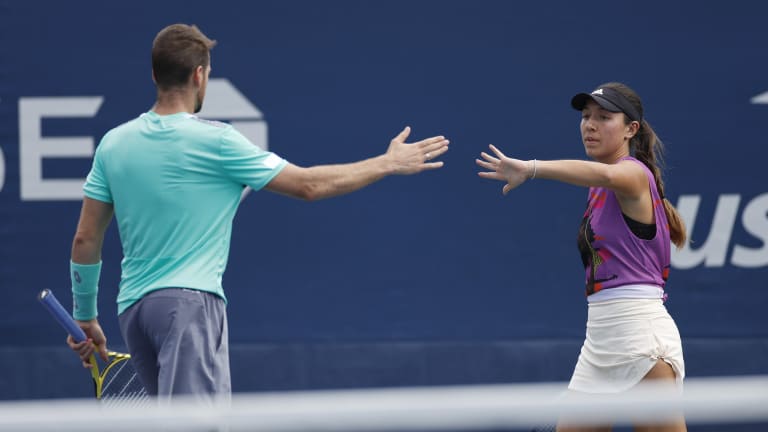US Open
Top-ranked American Jessica Pegula making up for lost time with heavy US Open workload
By Sep 01, 2022US Open
Aryna Sabalenka: Grigor Dimitrov “begged” me to play US Open mixed doubles
By Jun 19, 2025US Open
US Open breathes new life into mixed doubles format with Fan Week revamp
By Jun 18, 2025US Open
Carlos Alcaraz-Emma Raducanu among top tier US Open mixed doubles pairs
By Jun 17, 2025US Open
US Open revamps mixed doubles format, adds $1 million prize to incentivize "biggest names in the sport"
By Feb 11, 2025US Open
US Open adds a 15th day, moves to Sunday start in 2025
By Jan 29, 2025US Open
Post-2024 US Open WTA storylines: The Age of Aryna; what's next for Swiatek and Gauff?
By Sep 09, 2024US Open
Post-2024 US Open ATP storylines: The race between Alcaraz and Sinner for No. 1 ... and more
By Sep 09, 2024US Open
Jannik Sinner’s US Open title run won’t clear the air around him entirely
By Sep 09, 2024US Open
Taylor Fritz fails in US Open final, but hope springs for American men's tennis
By Sep 09, 2024Top-ranked American Jessica Pegula making up for lost time with heavy US Open workload
On Thursday, the 28-year-old defeated Aliaksandra Sasnovich in the second round of singles and was due to return alongside Coco Gauff later.
Published Sep 01, 2022
Advertising
Advertising

Heading into the US Open, Pegula was ranked No. 4 in the singles race to the WTA Finals. She's also No. 3 in the doubles race with Gauff.
© 2022 Getty Images
Advertising
Advertising

Pegula and Krajicek advanced past Robin Montgomery and Nick Monroe in their opener.
© Getty Images